Richardson, TX
Home MenuHome Isolation and Quarantine
Testing Locations
Signs of COVID Infection
Types of Home Isolation
Isolation Plan
Family and Caregiver Support
Medical Waste Disposal
Defend Your Drains
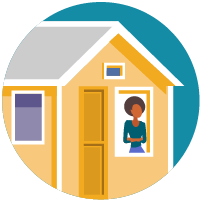
If you have a fever or cough, you might have COVID-19. Most people have mild illness and are able to recover at home. If you think you may have been exposed to COVID-19, contact your health care provider immediately.
The following information is provided by the Centers for Disease Control and Prevention
- Pay attention for potential COVID-19 symptoms including, fever, cough and shortness of breath.
- If you feel like you are developing symptoms, stay home and call your doctor. Tell them that you have or may have COVID-19. This will help them take care of you and keep other people from getting infected or exposed.
- If you are not sick enough to be hospitalized, you can recover at home.
- If you develop emergency warning signs for COVID-19 get medical attention immediately. In adults, emergency warning signs* are:
- Difficulty breathing or shortness of breath
- Persistent pain or pressure in the chest
- New confusion or inability to arouse
- Bluish lips or face
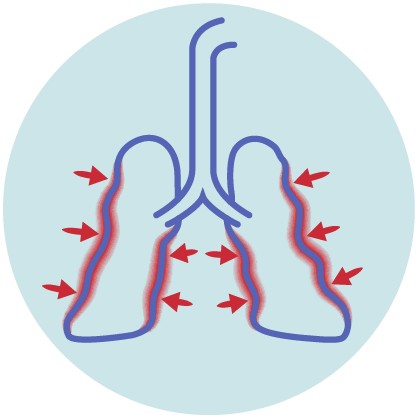
* This list is not all inclusive. Please consult your medical provider for any other symptoms that are severe or concerning
Drive-Thru COVID-19 Testing Locations
Signs of COVID Infection
If you are sick with COVID-19 or think you might have COVID-19, follow the steps below from the Centers from Disease Control and Prevention to care for yourself and to help protect other people in your home and community.
Stay home except to get medical care
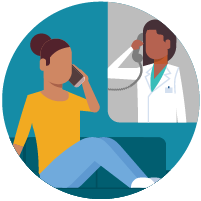
- Stay home. Most people with COVID-19 have mild illness and can recover at home without medical care. Do not leave your home, except to get medical care. Do not visit public areas.
- Take care of yourself. Get rest and stay hydrated.
- Stay in touch with your doctor. Call before you get medical care. Be sure to get care if you have trouble breathing or have any other emergency warning signs (see above) or if you think it is an emergency.
- Avoid public transportation, ride-sharing or taxis.
- Separate yourself from other people and pets in your home
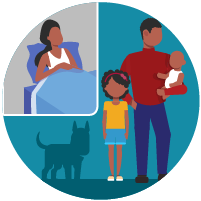
As much as possible, stay in a specific room and away from other people and pets in your home. Also, you should use a separate bathroom, if available. If you need to be around other people or animals in or outside of the home, wear a cloth face covering.
Types of Home Isolation
Household contacts of people with COVID-19
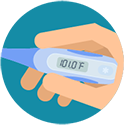
Household contacts must be quarantined for 14 days after the person with COVID-19 is fever free (without the use of fever reducing medications) and feeling well. This means that household contacts may need to remain at home longer than the initial person with COVID-19.
Examples:
- A person with COVID-19 is well three days after onset. The household contact must remain quarantined until day 17.A person with COVID-19 is well seven days after onset. The household contact can be released on day 21.
- A person with COVID-19 is well 14 days after onset. The household contact can be released on day 28.
If a household contact develops symptoms, they should self-isolate and follow the instructions above for people with COVID-19.
People with COVID-19 who have stayed home (home isolated)
can stop home isolation under the following conditions:- If you have not had a test to determine if you are still contagious, you can leave home after these three things have happened:
- You have had no fever for at least 72 hours (that is three full days of no fever without the use medicine that reduces fevers)
AND - other symptoms have improved (for example, when your cough or shortness of breath have improved)
AND - at least seven days have passed since your symptoms first appeared
- You have had no fever for at least 72 hours (that is three full days of no fever without the use medicine that reduces fevers)
- If you have been tested to determine if you are still contagious, you can leave home after these three things have happened:
- You no longer have a fever (without the use medicine that reduces fevers)
AND - other symptoms have improved (for example, when your cough or shortness of breath have improved)
AND - you received two negative tests in a row, 24 hours apart.
- You no longer have a fever (without the use medicine that reduces fevers)
In all cases, follow the guidance of your health care provider and local health department. The decision to stop home isolation should be made in consultation with your health care provider and state and local health departments. Local decisions depend on local circumstances.
Non-household contacts of people with COVID-19
People who have made contact with people with COVID-19 must be quarantined for 14 days from the date of last contact with the case.
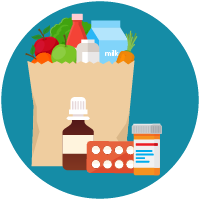
Isolation Plan
- Know how to stay in touch with others by phone or e-mail. You may need to ask for help from friends, family, neighbors and community health workers if you become sick.
- Determine who can care for you if your caregiver gets sick.
- Contact your health care provider to ask about obtaining extra necessary medications to have on hand in case there is an outbreak of COVID-19 in your community and you need to stay home for a prolonged period of time.
- If you cannot get extra medications, consider using a mail-order service for medications.
- Be sure you have over-the-counter medicines and medical supplies (tissues, etc.) to treat fever and other symptoms. Most people will be able to recover from COVID-19 at home.
- Have enough household items and groceries on hand so that you will be prepared to stay at home.
- Consider ways of getting medications and food brought to your house through family, social, or commercial networks.
Family and caregiver support
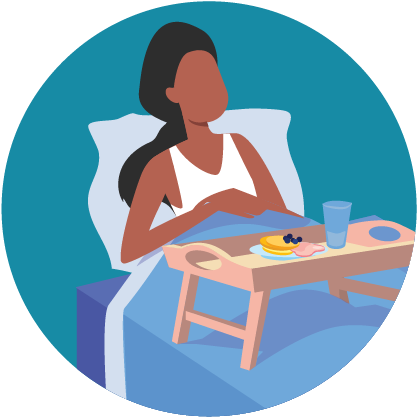
- Know what medications your loved one is taking and see if you can help them have extra on hand.
- Monitor food and other medical supplies (oxygen, incontinence, dialysis, wound care) needed and create a back-up plan.
- Stock up on non-perishable food to have on hand in your home to minimize trips to stores.
- If you care for a loved one living in a care facility, monitor the situation, ask about the health of the other residents frequently and know the protocol if there is an outbreak.
- While taking care of a family member, don’t forget to take care of yourself. If you are experiencing stress, anxiety or emotional challenges and need assistance, there are mental health hotlines available at no cost. Click here for more information.
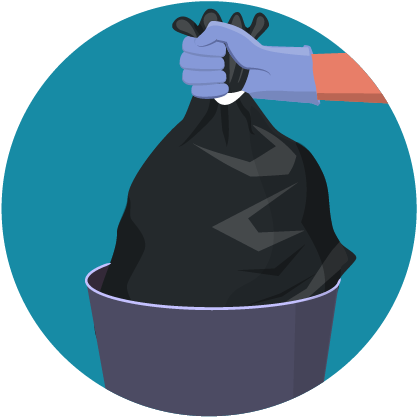
Medical Waste Disposal
Americans should take extra care with their waste and recycling, especially if it was generated in a quarantined home. The Centers for Disease Control and Prevention recommends using gloves when handling trash generated by an ill person. From a sick home or not, recyclable and non-recyclable waste should be double-bagged or placed in durable bags unlikely to rip, tear or burst. Doing so will not only protect the health of the people employed to collect your trash, but also help to maintain clean cities where disease outbreaks are rare and quick.

Defend Your Drains
Due to the recent short supply of toilet paper, many people have resorted to using alternative methods, including wipes, paper towels and other items. These items may appear to flush easily, but they do not break down fully and can cause a number of issues at local wastewater treatment plants including blocking sewer lines. Please help keep our sewer lines unclogged by only flushing toilet paper down the toilet.
